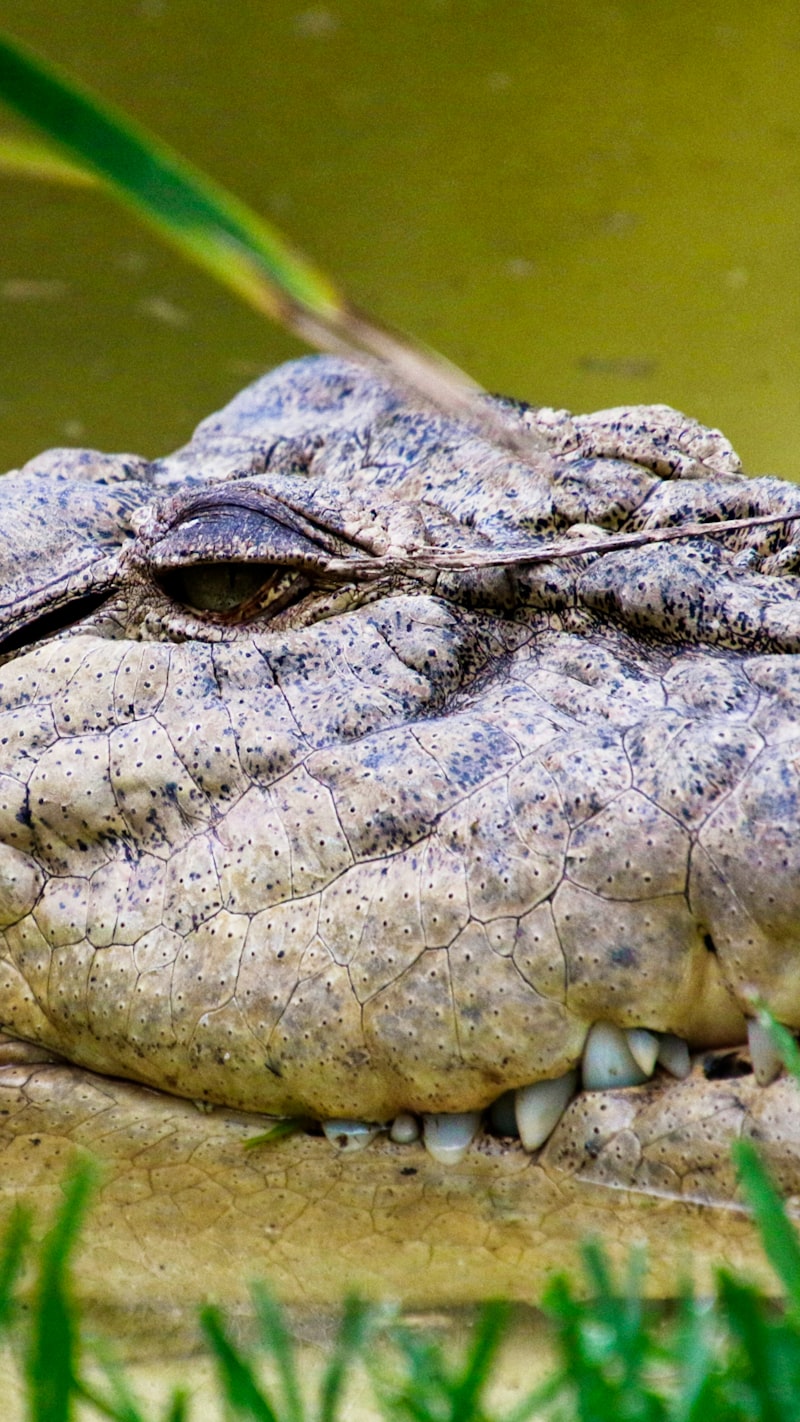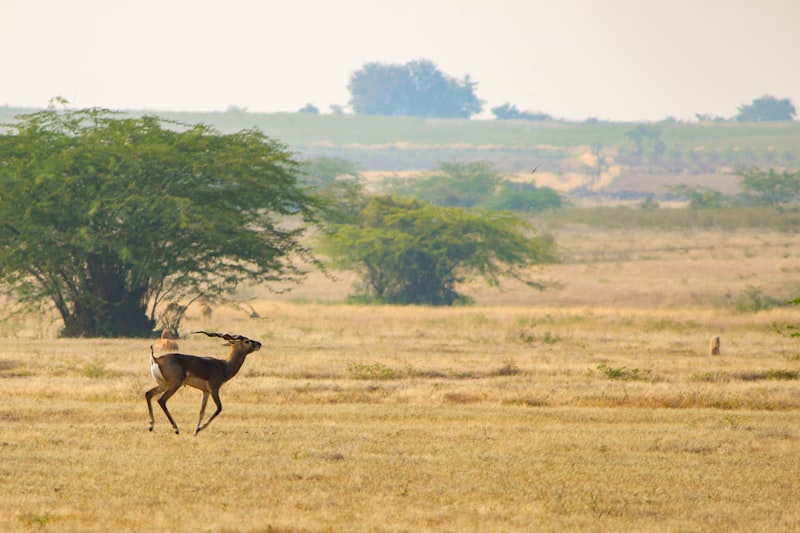Firstly, location is key. Choose a site that aligns with the sanctuary’s mission and supports the native wildlife species you aim to protect. Consider factors like habitat suitability, accessibility for wildlife, and proximity to human settlements for community engagement.
Next, secure legal permissions and permits. Establishing a wildlife sanctuary involves navigating through legal frameworks that govern conservation areas. This includes obtaining permits from local authorities and complying with environmental regulations to ensure the sanctuary operates legally and ethically.
Once the location is secured, habitat restoration and management come into play. Assess the existing habitat conditions and implement restoration strategies if needed. This may involve planting native vegetation, creating water sources, and minimizing human disturbances to encourage natural biodiversity.
Creating partnerships and collaborations is crucial for sustainability. Engage with local communities, conservation organizations, and governmental agencies to garner support, share resources, and amplify conservation efforts. Building alliances strengthens the sanctuary’s impact and fosters a network for knowledge exchange and advocacy.
Furthermore, funding and resource mobilization are essential components. Establish sustainable funding sources through grants, donations, ecotourism initiatives, and partnerships with corporate sponsors. Develop a robust financial plan that ensures long-term operational stability and the ability to expand conservation efforts.
Educational outreach programs play a vital role in raising awareness and fostering stewardship. Develop educational initiatives, workshops, and guided tours to engage visitors and local communities in wildlife conservation. Inspire future generations to appreciate and protect biodiversity through interactive learning experiences.
Lastly, monitoring and evaluation are ongoing processes to assess the sanctuary’s impact and adapt conservation strategies accordingly. Implement monitoring programs to track wildlife populations, habitat health, and community involvement. Continuous evaluation ensures that the sanctuary remains effective in its mission to protect and conserve wildlife.
Starting a wildlife sanctuary is a profound commitment to preserving natural ecosystems and safeguarding endangered species. By following these steps with passion and perseverance, you can embark on a journey that leaves a lasting legacy of conservation and biodiversity protection.
From Dream to Reality: A Step-by-Step Guide to Launching Your Wildlife Sanctuary
Firstly, envision your sanctuary’s mission. What species do you aim to protect? Is it a refuge for endangered animals, or perhaps a haven for rescued wildlife? Define your sanctuary’s purpose clearly, as this will guide all your subsequent decisions and actions.
Next, research and choose the right location. Consider factors such as habitat suitability, proximity to resources, and legal considerations. Each ecosystem supports different wildlife, so select a location that aligns with your sanctuary’s mission and the needs of the species you intend to shelter.
Once you’ve chosen a location, securing funding becomes crucial. Establishing and maintaining a wildlife sanctuary requires financial resources for land acquisition, habitat restoration, animal care, and operational expenses. Explore grants, partnerships, and crowdfunding opportunities to fund your initiative sustainably.
After securing funding, develop a comprehensive management plan. This plan should outline daily operations, animal welfare protocols, visitor engagement strategies, and long-term conservation goals. Consult with wildlife experts and conservationists to ensure your plan adheres to ethical standards and maximizes impact.
Building partnerships with local communities, conservation organizations, and governmental bodies is essential for support and collaboration. Engage stakeholders who share your passion for wildlife conservation and can contribute expertise, resources, or advocacy to bolster your sanctuary’s mission.
Finally, prepare for the launch and ongoing management of your sanctuary. This includes obtaining necessary permits, constructing enclosures or habitats, hiring trained staff, and implementing safety measures for both animals and visitors. Embrace challenges as opportunities for growth, and continuously adapt your approach based on feedback and new knowledge.
Building a Haven: Essential Tips for Establishing Your Own Wildlife Sanctuary
The first step in establishing a wildlife sanctuary is comprehending your landscape. Assess the natural features like water sources, vegetation types, and existing wildlife. Each element plays a crucial role in shaping the sanctuary’s biodiversity. Consider the needs of local wildlife species – from nesting areas for birds to sheltered spaces for mammals.
Native plants are the cornerstone of a thriving sanctuary. They provide food and shelter uniquely adapted to local wildlife. Incorporate a variety of species to support diverse ecosystems. Imagine your sanctuary as a tapestry where each plant contributes to the richness of life, attracting butterflies, bees, and other pollinators crucial for ecological balance.
Water is life, especially in a sanctuary. Ensure a sustainable water source, whether it’s a pond, stream, or strategically placed water features. These not only quench thirst but also invite amphibians, aquatic insects, and birds, fostering a dynamic aquatic ecosystem.
Diverse habitats mimic natural landscapes, encouraging a broader range of wildlife to call your sanctuary home. From meadows to woodlands, each habitat offers distinct niches for plants and animals. Employ natural features like fallen logs and rock piles to provide shelter and breeding grounds for small mammals and reptiles.
Embrace sustainability in every aspect of sanctuary management. From organic gardening practices to minimizing chemical use, prioritize wildlife-friendly solutions. It’s about creating a safe haven where both flora and fauna thrive without harm.
A wildlife sanctuary isn’t just a private venture; it’s an opportunity to inspire and educate. Engage your community through outreach programs, workshops, and guided tours. Foster a sense of stewardship and appreciation for biodiversity.
Building a sanctuary is an evolving process. Monitor wildlife populations, plant growth, and habitat health regularly. Adapt management strategies based on observations to ensure long-term sustainability and ecological balance.

Establishing your own wildlife sanctuary is a transformative journey, blending passion for nature with practical conservation efforts. It’s about cultivating a haven where every rustle of leaves and flutter of wings tells a story of resilience and interconnectedness in our natural world.
The Ultimate Blueprint: Starting Your Wildlife Sanctuary in 5 Simple Steps
Firstly, research is paramount. Understanding the local ecosystem, including native species and habitats, will inform your sanctuary’s focus and conservation goals. Dive deep into environmental regulations and permits required to establish and operate a sanctuary in your region.
Secondly, scout for the perfect location. Consider factors like biodiversity richness, habitat suitability, and accessibility for visitors and wildlife alike. Whether it’s a sprawling woodland or a rejuvenated wetland, the site should align with your sanctuary’s vision and mission.
Next, formulate a comprehensive sanctuary plan. Outline your goals, management strategies, and long-term sustainability measures. This blueprint will serve as your roadmap, guiding everything from fundraising efforts to daily operations.
Now, mobilize support and resources. Collaborate with local communities, conservation organizations, and governmental bodies. Seek partnerships and sponsorships to secure funding for land acquisition, infrastructure development, and ongoing conservation projects.
Finally, embark on habitat restoration and species conservation initiatives. Implement your sanctuary plan diligently, ensuring habitats are restored and species populations are monitored and protected. Engage volunteers and stakeholders in educational programs and ecotourism activities to raise awareness and foster stewardship.
Establishing a wildlife sanctuary requires dedication, persistence, and a deep commitment to conservation. By following these five simple steps, you can lay a solid foundation for your sanctuary’s success, contributing positively to biodiversity conservation and environmental sustainability.
Inside Look: Experts Share Secrets to Successfully Launching a Wildlife Sanctuary
Firstly, the location is key. Choosing the right spot involves more than just scenic views. It’s about biodiversity, habitat suitability, and accessibility for both wildlife and visitors. Imagine a sanctuary nestled in the heart of a lush forest, where each corner teems with life, from elusive big cats to colorful bird species. This sets the stage for a sanctuary that’s not just a refuge but a thriving ecosystem.
Next up, funding. Let’s face it—building and maintaining a sanctuary isn’t cheap. Securing funding from grants, donations, and partnerships is crucial. It’s like building a sturdy house; you need a solid foundation of financial support to ensure the sanctuary’s sustainability for years to come.
Now, imagine you’re coordinating with experts—wildlife biologists, conservationists, veterinarians—all working together like a finely tuned orchestra. Each expert brings unique knowledge and skills, from designing animal habitats to implementing sustainable practices. It’s a collaborative effort where every decision is aimed at ensuring the sanctuary’s success.
And speaking of success, education and outreach play a pivotal role. It’s not just about saving animals; it’s about fostering a deep connection between visitors and wildlife. Picture children wide-eyed with wonder as they learn about endangered species, or adults gaining a newfound appreciation for nature’s delicate balance.
Launching a wildlife sanctuary isn’t just a project; it’s a profound commitment to conservation. It’s about creating a haven where animals thrive and humans learn. By understanding these insights from experts, anyone can take the first steps towards making a lasting impact on our planet’s precious biodiversity.
Navigating Legal Waters: Understanding Permits and Regulations for Wildlife Sanctuaries
Setting up a wildlife sanctuary can be an exhilarating endeavor, but understanding the necessary permits and regulations is crucial to avoid potential pitfalls. Imagine embarking on a journey to create a safe haven for wildlife, only to encounter bureaucratic hurdles that could have been navigated with proper knowledge.
Firstly, what exactly are permits in the realm of wildlife sanctuaries? Think of permits as your legal passport to operate. They’re formal permissions granted by governmental bodies that allow you to establish and manage a sanctuary. Just like you need a driver’s license to legally drive a car, permits ensure you’re complying with laws aimed at protecting both wildlife and their habitats.
When it comes to regulations, think of them as the rules of the game. They specify how you should conduct activities within the sanctuary to ensure minimal impact on the environment and wildlife. Regulations cover everything from construction of facilities to visitor management and wildlife rehabilitation protocols. They’re designed not only to protect wildlife but also to sustainably manage interactions between humans and nature.
Now, let’s delve into the types of permits you might encounter. Depending on where you’re located, permits can vary widely. Some common ones include permits for construction (if you’re building facilities), permits for wildlife rehabilitation (if you plan to care for injured animals), and permits for educational activities (if you want to engage the public in conservation efforts).
Understanding these permits involves knowing the local, state, and federal laws that apply to wildlife conservation. It’s like navigating a complex maze where each turn requires careful consideration of legal requirements and environmental impact. Just as a ship needs a skilled navigator to steer through treacherous waters, you need to navigate the legal waters with knowledge and foresight.
Funding Your Passion: Creative Strategies to Finance Your Wildlife Sanctuary
One of the most effective methods is crowdfunding. Platforms like Kickstarter and GoFundMe allow you to share your vision with a global audience passionate about conservation. Craft a compelling story, showcase your sanctuary’s mission, and offer attractive rewards for backers. Engaging supporters emotionally can significantly boost your funding.
Grant funding is another valuable avenue. Research environmental and wildlife conservation grants offered by governments, NGOs, and private foundations. Tailor your proposals to align with their objectives, emphasizing the ecological impact and community benefits of your sanctuary.
Consider forming strategic partnerships with businesses aligned with your sanctuary’s mission. Corporate sponsorships can provide financial support, in-kind donations, or even volunteer assistance. Approach companies with a strong CSR (Corporate Social Responsibility) focus or those seeking to enhance their environmental credentials.
Hosting fundraising events can generate buzz and financial support. Organize wildlife-themed galas, auctions, or eco-tours of your sanctuary. These events not only raise funds but also foster community engagement and awareness about conservation issues.
Engaging with local communities is crucial. Offer educational programs, guided tours, or volunteer opportunities at your sanctuary. Establishing a membership program where individuals contribute annually can provide sustainable funding while building a loyal supporter base.

Harness the power of social media and digital marketing to amplify your fundraising efforts. Share inspiring stories, stunning wildlife photography, and updates on sanctuary progress. Leverage video content to create emotional connections and encourage donations.
Lastly, explore eco-tourism as a revenue stream. Develop unique visitor experiences like guided safaris, nature walks, or wildlife photography workshops. Sustainable tourism can generate income while promoting conservation awareness.
By combining these creative funding strategies, you can finance your wildlife sanctuary and make a lasting impact on biodiversity conservation. Embrace innovation, tell your story passionately, and rally support from individuals and organizations committed to preserving our natural world.
Frequently Asked Questions
What are the essential considerations for managing wildlife in a sanctuary?
Learn essential considerations for managing wildlife in a sanctuary, covering topics such as habitat preservation, species monitoring, sustainable practices, and community engagement.
What permits and licenses are required to start a wildlife sanctuary?
Learn about the necessary permits and licenses required to establish a wildlife sanctuary. Ensure compliance with local, state, and federal regulations to legally operate and protect wildlife.
What are the key steps to establish a wildlife sanctuary?
Learn the essential steps for establishing a wildlife sanctuary, ensuring habitat protection and biodiversity conservation. Discover how to secure land, conduct ecological assessments, develop management plans, and engage stakeholders for sustainable conservation efforts.
How can I choose a suitable location for a wildlife sanctuary?
Choosing a suitable location for a wildlife sanctuary involves assessing factors like biodiversity, habitat suitability, connectivity to other protected areas, and potential threats. Conducting thorough surveys and consultations with experts are crucial to ensure the sanctuary supports diverse wildlife and can be effectively managed and protected.
How do I secure funding for a wildlife sanctuary project?
Learn how to secure funding for your wildlife sanctuary project with our concise guide. Discover effective strategies and essential steps to attract sponsors, apply for grants, and engage community support.




[…] How to Start a Wildlife Sanctuary […]
[…] How to Start a Wildlife Sanctuary […]